The ideal labor cost in a restaurant differs for every concept because it depends on the overall prime costs as a percentage of sales. Prime costs, which is the cost of goods (COGS) plus labor, should never exceed 65% for full-service restaurants and 60% for quick-service restaurants. Therefore, the ideal labor cost is the amount that allows you to minimize your overall prime costs below these thresholds without sacrificing the guest experience. A high labor cost may offset a low COGS percentage, and vice versa. That’s why there is no official rule of thumb for labor cost as a percentage of sales. For example, a steakhouse might have high food costs, offset by lower labor costs, whereas a pizza spot might have lower food costs but higher labor costs. That said, labor costs must be analyzed holistically, considering overall prime costs and profitability, not in a vacuum. However, there are still some boundaries and industry averages that we can benchmark against to help identify if labor is an issue. This article will provide labor cost industry averages by job function and show you how to identify and fix a labor cost problem, to get to your ideal labor cost.
Labor Cost as a Percentage of Sales
Labor cost is usually assessed based on labor costs as a percentage of sales. Labor cost as a percentage of sales could indicate whether labor is the cause of high prime costs. Labor cost as a percentage of sales is typically as follows:

Remember, these are averages, not necessarily the ideal labor budget because that is unique based on each concept mentioned above.
Analyzing and Reducing Labor Costs
Analyzing and reducing labor costs requires dissecting labor into its fixed and variable components.
Variable Labor
Variable labor includes employees added to a schedule as sales increase. You will know if you have a variable cost issue if your total labor costs as a percentage of sales have increased proportionally with sales. Labor costs do not increase proportionally with sales due to the fixed labor component. This will cause labor cost percentages to fluctuate without management doing anything with the schedule. For example, an increase of 50 customers per hour will require adding one or two more servers to the schedule while other job categories remain constant. Additional bartenders or hostesses may not be added to the schedule until customer counts increase by 100. Subsequently, payroll costs will increase in incremental steps, not directly to sales.
If labor costs as a percentage of sales increase proportionally with sales, management should ask themselves:
-
- Did we mess up on the schedule?
- Did we deviate from the schedule?
- Did we hire several new employees during the week that are training? (They might not be very productive yet)
- Was there excessive overtime due to a labor shortage?
- Was there buddy punching or incorrect clocking in?
This might happen in segments. For example, a restaurant may incur a 50% labor cost during breakfast but 30% during lunch and dinner. In this case, you should consider whether breakfast hurts your bottom line. However, if the staff at breakfast would be there anyway preparing for lunch, it’s better to serve breakfast and have 50% labor cost instead of 100% labor cost due to not having revenue. You can track labor costs (by shift) in your POS to assess if service/business hours make sense financially.
Fixed Labor
Fixed labor includes management salaries that must be paid regardless of sales volume, plus the minimum hourly employees you need to schedule on the slowest hours, meal periods, and days of the week so that you can stay open.
If total labor cost as a percentage of sales increases disproportionately to a decline in sales, there could be a fixed labor problem. If this happens, you could have low sales, not labor issues. A sign of a high fixed labor issue is underutilized labor and space, which can be identified observationally or by tracking sales/covers per labor hour in the POS.
If the restaurant has high labor costs due to high fixed management salary labor costs, you could reduce fixed labor costs as a percentage of sales by adding additional hours, open days, third-party delivery, catering, etc. When adding additional hours/days, the restaurant needs to consider the minimum amount of hourly labor they need to stay open because you don’t want to add additional hours or days if the sales do not cover the minimum hourly employees needed.
To understand whether low sales or high fixed labor are causing your high labor costs, ask yourself:
-
- Were sales lower? If the sales were lower than usual, and you needed to maintain a certain number of minimum staff, then that could explain the high labor costs.
- Is lunch or breakfast profitable?
Fixing a fixed labor problem is difficult because it is tied to low sales, how the business is structured, or both. Increasing sales or restructuring labor is more difficult than controlling variable labor. This usually requires an overhaul of the business model or reconceptualizing, whereas fixing variable labor is a matter of better scheduling.
Final Word on Ideal Labor Cost
As you can see, there is no ideal labor cost as a percentage of sales, but there is an ideal prime cost as a percentage of sales, which is <60% for quick-service restaurants and <65% for full-service restaurants. A 40% labor cost combined with a 20% food cost in a full-service restaurant is very good. However, looking at the labor costs in a vacuum, you might think it’s too high. Therefore, when assessing your labor costs, it’s important to determine the labor that will yield the lowest overall prime costs without sacrificing the guest experience. For help understanding your labor costs, schedule a call with us.








